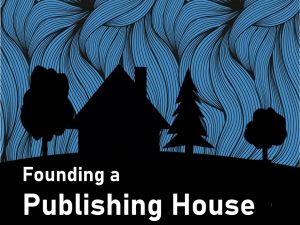Every author needs a newsletter. Newsletters get mixed in with blogs, guest articles, and social media posts . . . all things an author must write when they’re not writing a book. If it sounds painful, it shouldn’t. Why? Well, because newsletters are letters. They’re a special way to share your personal life and build connections with readers.
An author newsletter should contain the kind of updates you’d send a favorite cousin. The email format allows authors to be more personal and candid than they would on Facebook or Twitter. It’s the place to open up, be a little vulnerable, and totally authentic because newsletter subscribers truly care about and support the author as a person.
Develop a loyal readership by showing off your personality, sharing stories from workshops, and occasionally including pictures of pets. Don’t turn your emails into a diary. Just give small insights into your personal life and be sure to include something fun. Once readers understand that your newsletter is a conversation, not an incessant one-way sales pitch, they’ll be more engaged and far more likely to open the email. Continue reading
 In order to compete with traditionally published books, many self-publishers choose to found their own publishing houses. Not only does this lend an air of professionalism to their writing endeavors, it serves to separate book publishing activities from personal income, providing a necessary level of legal and financial protection to self-publishers.
In order to compete with traditionally published books, many self-publishers choose to found their own publishing houses. Not only does this lend an air of professionalism to their writing endeavors, it serves to separate book publishing activities from personal income, providing a necessary level of legal and financial protection to self-publishers. Authors often dream of seeing their books in print and calculate the royalties they expect to earn per book once their baby hits the market. Few stop to consider how much capital they need up-front to cover pre-publication expenses. These expenses can be broken into three general categories: product development, business development, and marketing.
Authors often dream of seeing their books in print and calculate the royalties they expect to earn per book once their baby hits the market. Few stop to consider how much capital they need up-front to cover pre-publication expenses. These expenses can be broken into three general categories: product development, business development, and marketing.